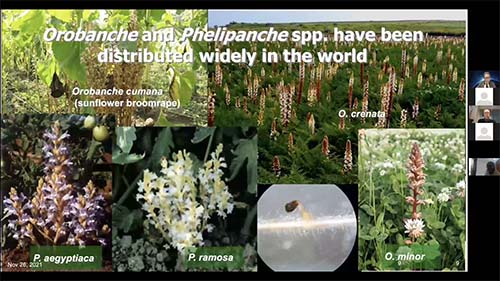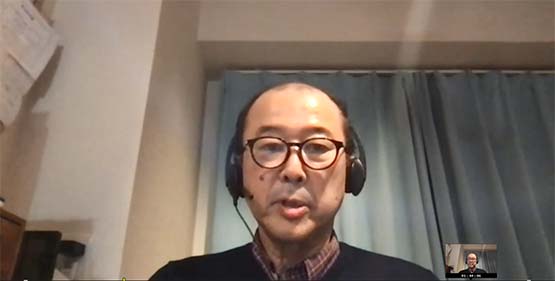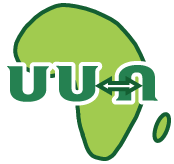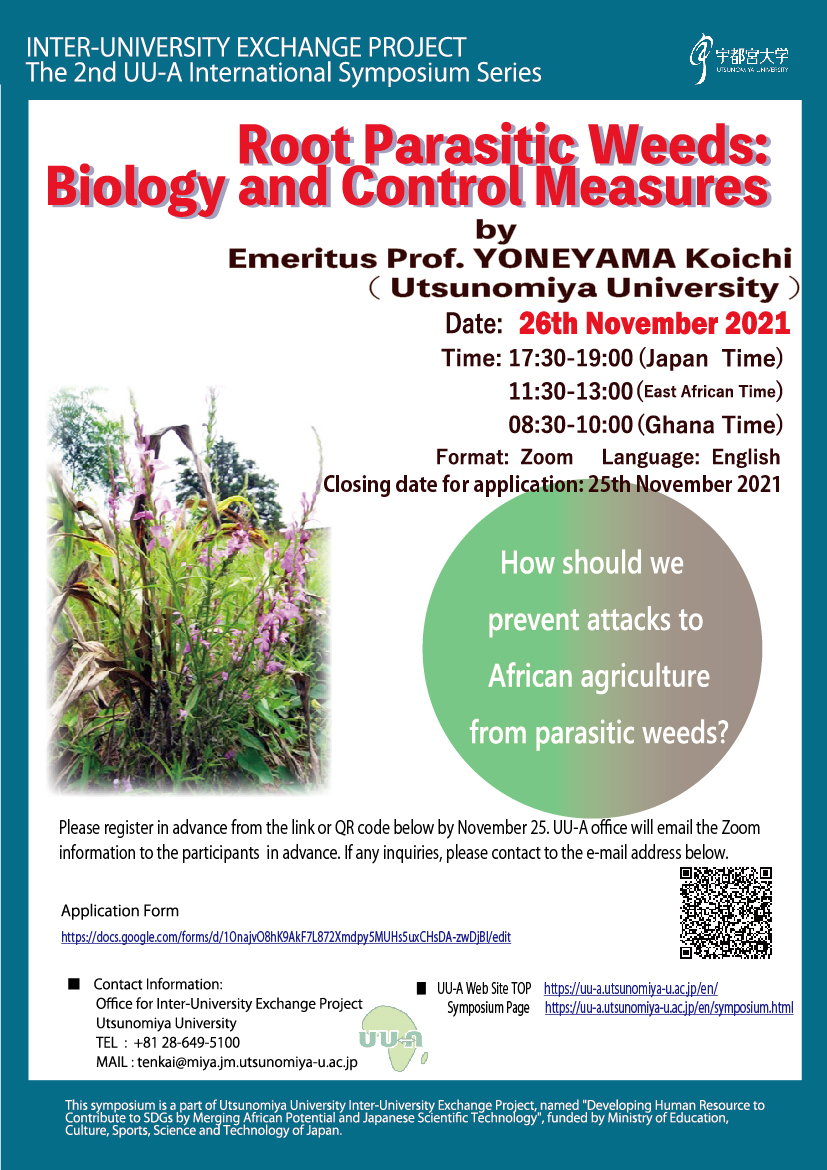“Root Parasitic Weeds: Biology and Control Measures”
Lecturer: Emeritus Prof. YONEYAMA Koichi(Utsunomiya University)
Date: 26th November 2021 17:30-19:00(Japan time)
Emeritus Professor Koichi Yoneyama, Utsunomiya University, gave a lecture in the title “Root Parasitic Weeds: Biology and Control Measures”. First, he explained the definition and kinds of parasitic plants, followed by the properties of main root parasitic weeds, Striga species (parasitizing monocots) and Orobanche species (Phelipanche species) (parasitizing dicots). Especially, Striga species cause severe damage to agricultural crops in Africa. Then, he showed the distribution of the main root parasitic weeds in the world and their life cycle. It is amazing that single root parasitic weed produces 10,000~500,000 seeds and they can survive more than 20 years. He also explained the chemical structures, kinds, and analytical methods of strigolactones, natural germination stimulants of root parasitic weeds. Strigolactones have three functions: inhibition of shoot branching of plants, induction of seed germination of root parasitic weeds, and induction of hyphal branching of arbuscular mycorrhizal fungi. In addition, root parasitic weeds recognize host plants by using specific kinds of strigolactones. Furthermore, he explained control measures of root parasitic weeds in details. The following control measures are applied: breeding of resistant cultivars (ex. a sorghum mutant resistant to Striga), soil fumigation, combinations of herbicide resistant cultivars and herbicides (ex. novel approach by International Maize and Wheat Improvement Center), biological herbicides (ex. Kichawi Kill™ which utilizes a fungal pathogen of Striga species in Kenya), and “Push-Pull” technology (a combination of Napier grass and Desmodium). After the lecture, Associate Professor John Mwibanda Wesonga, Jomo Kenyatta University of Agriculture and Technology, commented on the contents of the lecture. After that discussion was made by including attendants.


■ The Symposium Video
Click the image to open PDF File (1.33MB)


